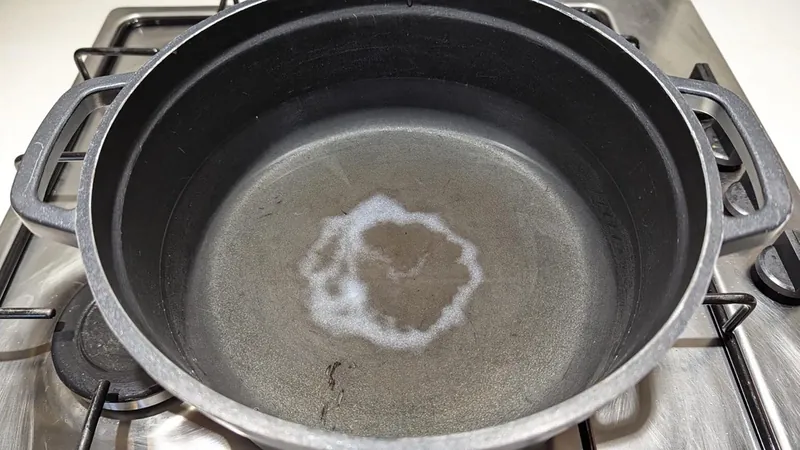
The Hidden Science Behind the Mysterious Salt Rings in your Pasta Pan Revealed!
2025-01-21
Author: Charlotte
Introduction
Have you ever noticed a curious white ring of salt deposits lingering at the bottom of your pasta pan after cooking? You may have shrugged it off, but scientists from the University of Twente in the Netherlands and the French National Institute for Agriculture, Food, and Environment (INRAE) saw a captivating mystery, inspiring them to delve into the science behind this kitchen phenomenon.
The Research
During a casual evening, filled with laughter and a delicious pasta dinner, these researchers turned their attention to the question: What creates the perfect salt ring in your pot? Would the particle size matter? How quickly should you add the salt, and is there an ideal volume of water required? These inquiries led to a fascinating exploration, recently published in the journal *Physics of Fluids*.
The Science Behind Salt Rings
According to the research, the process behind these salt deposits is more intricate than one might expect. When salt particles are introduced into boiling water, gravity pulls them down, creating wakes in the flowing water. This induced movement disrupts the surrounding liquid, causing nearby particles to drift, ultimately leading to the salt forming a circular pattern at the bottom of the pan.
The Experiment
“By the end of our meal, we sketched an experimental protocol,” said researcher Mathieu Souzy. His casual dinner with family transformed into a detailed investigation into sedimentation – the process by which particles settle at the bottom of a liquid. The team discovered that when a large volume of particles is released rapidly, the affected water flow leads to the formation of a distinct, mesmerizing salt ring.
Particle Behavior
Interestingly, if the particles fall from a higher point, they spread out more before settling, creating a uniform deposit instead of the characteristic ring. This captivating discovery highlights how seemingly mundane kitchen experiences harbor complex physical principles.
Broader Implications
But wait – there's more! The researchers found that larger particles tend to disperse more widely compared to smaller ones, effectively allowing you to sort particles by size just by releasing them into water. This revelation hints at broader applications beyond the kitchen, possibly informing industries that rely on particle separation techniques.
Conclusion
So next time you’re boiling pasta, you can appreciate that what may seem like harmless leftover salt is actually a dance of physics taking place in your pot. Dive into your cooking with this newfound knowledge and impress your friends with your understanding of the science behind those enchanting salt rings!









 Brasil (PT)
Brasil (PT)
 Canada (EN)
Canada (EN)
 Chile (ES)
Chile (ES)
 Česko (CS)
Česko (CS)
 대한민국 (KO)
대한민국 (KO)
 España (ES)
España (ES)
 France (FR)
France (FR)
 Hong Kong (EN)
Hong Kong (EN)
 Italia (IT)
Italia (IT)
 日本 (JA)
日本 (JA)
 Magyarország (HU)
Magyarország (HU)
 Norge (NO)
Norge (NO)
 Polska (PL)
Polska (PL)
 Schweiz (DE)
Schweiz (DE)
 Singapore (EN)
Singapore (EN)
 Sverige (SV)
Sverige (SV)
 Suomi (FI)
Suomi (FI)
 Türkiye (TR)
Türkiye (TR)
 الإمارات العربية المتحدة (AR)
الإمارات العربية المتحدة (AR)